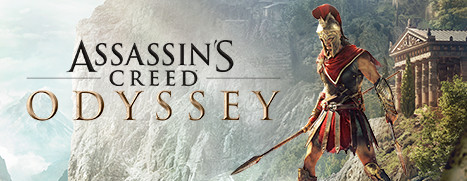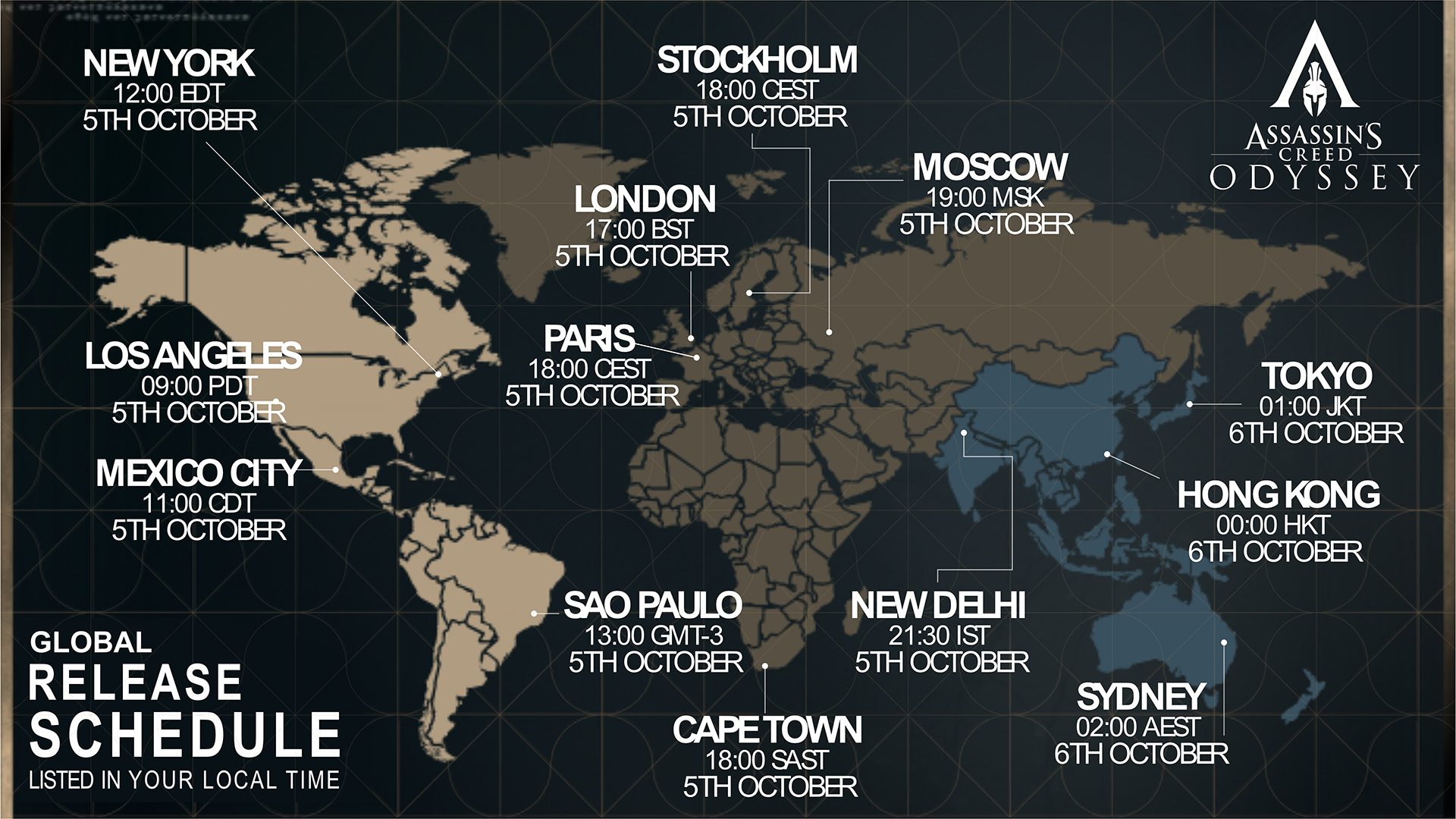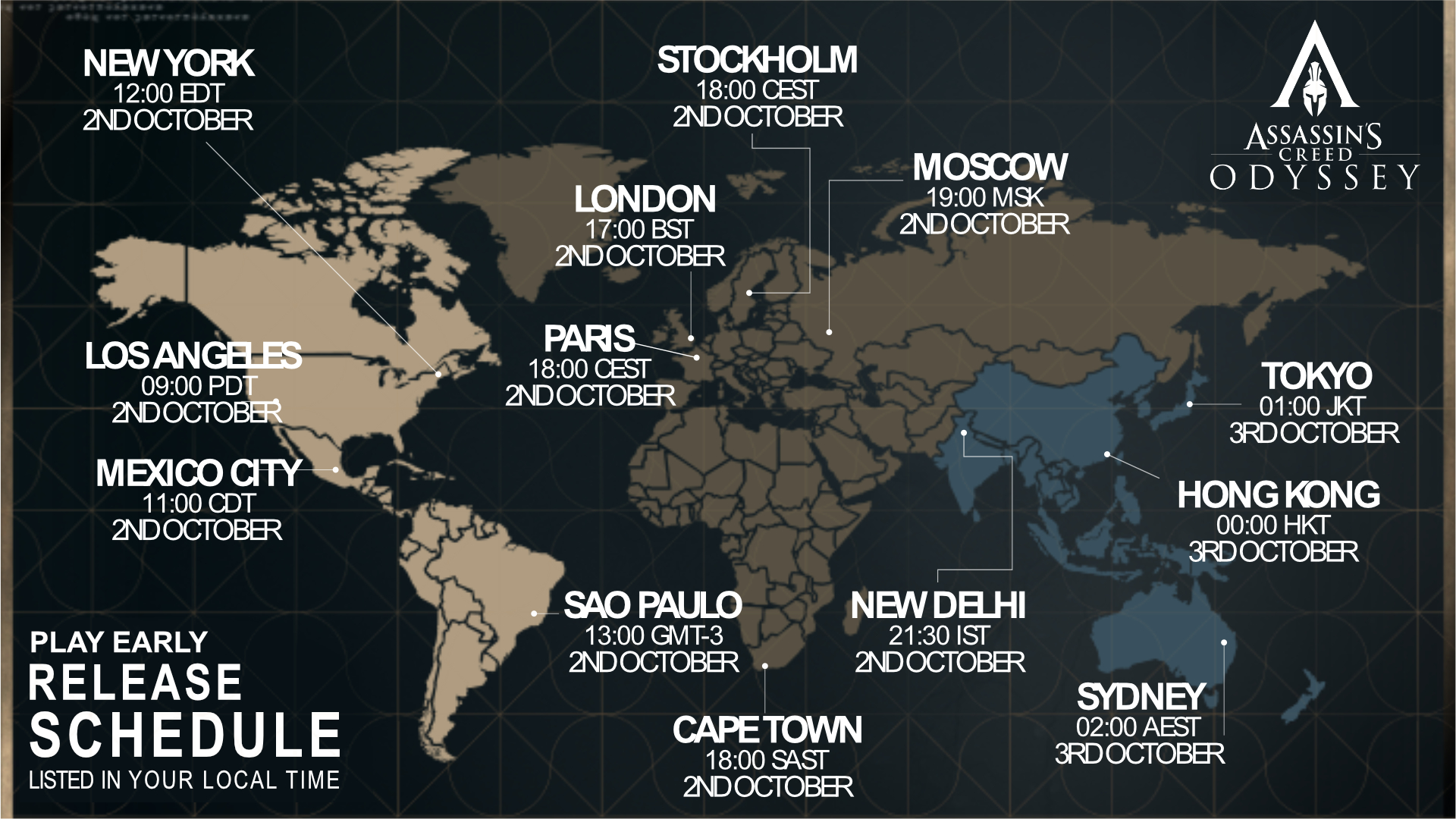Despite being another entry in Ubisoft's nearly annual series, Assassin's Creed Odyssey has enough new systems and stuff to confuse new and veteran players. The big open world is open enough that I accidentally wandered into a few situations before the game had explained how to handle them. To help you avoid the same issue, here's eight general Assassin's Creed Odyssey tips that I wish I'd known from the beginning of my Odyssey.
1 Choose Exploration mode instead of Guided mode
In Origins, the rash of unsightly, overlapping map icons had been reduced by quite a bit, and in Odyssey it's gone entirely. Instead, the game offers you a choice right at the beginning: do you want to play in "Exploration" mode or "Guided" mode? Guided mode is the Assassin's Creed maps as you've always known them, while Exploration strips away almost every icon, leaving a beautiful, clear map suitable for famous map activities like navigation. Instead, map icons are replaced with directions: the bandit camp is on the eastern coast of Kephallonia; the Spartan fortress is north of Mount Geranaia.
To be honest, unraveling these clues isn't hard. Sometimes there's only one unknown location, marked with a question mark, on the entire eastern coast. This mystery isn't exactly the Murder on the Orient Express, is what I'm saying. Still, when icons appear on a rotating compass in a game, I tend to get tunnel vision and spend more time eyeballing the compass than the beautiful handcrafted world around me. All I needed was a little bit of an excuse to keep my brain plugged into the physical world to get really lost in it.
That said, the world of ancient Greece is big—really big. Every mode of transportation has some sort of auto-run feature that really comes in handy. On horseback or on foot, pressing Z will get your character running so you can take your hands off the keyboard, while Space Bar does the same thing for boats. Horses in particular are good for this: hold Z for a moment and then press E, and your horse will auto-follow roads to navigate straight to a map marker.
Though I wouldn't recommend leaving the game unattended while on foot, having the horse drive or setting sail to an island a few thousand meters away gives you a break just long enough to go get a cup of coffee.
2 Upgrade your favorite weapons and armor
Weapons and armor play a huge role in character growth in Odyssey. There are a bunch of different weapon types—including swords, axes, staffs, spears, and daggers—and they all handle a bit differently and have different special attacks. Thankfully, I found that I was pretty much free to pick whatever I thought looked cool, since all of the weapons seem to be equally effective. Heavy maces are huge and slow, for example, but they kill Athenians every bit as dead as a dagger.
In fact, one of the really liberating things about gear in Odyssey is that it's almost absurdly customizable and upgradable. I keenly remember equipping some polka-dotted jester's monstrosity in the Witcher 3 just because it had the best armor stats I could afford at the time. Odyssey avoids that shame by offering an unlimited (though expensive in in-game resources) ability to upgrade any piece of gear to the current player level. Have a favorite sword you've been using since level 10, but it just can't cut it (har har) now that you're at level 15? Pay a blacksmith and boom, your favorite sword is now a level 15 sword.
One thing to keep in mind is that when collecting sets of Legendary Armor the whole set will automatically upgrade to the level of the last piece you collected. For example, I first collected four out of five pieces at the Snake set between levels 15 to 25, but the final piece I collected was at level 27. This automatically upgraded the entire Snake set to level 27, letting me save my precious materials for something else.
Gear isn't purely cosmetic, though. Odyssey has a huge system of engravings that add buffs and bonuses to gear: +10% warrior damage, +5% damage to Spartans, and so on. Common items can only hold a couple of engravings, but rare or legendary loot can hold many more. Legendary loot is definitely the best stuff to use, but I'm thankful that I never have to give up my awesome legendary gear after a few levels. Just upgrade it!
3 Use Sparta Kick to punt high-level enemies off anything tall
Unlike Origins, the world of Odyssey mostly matches the current player level. With a few exceptions, every wolf, bandit, and archer I kill is at my level, plus or minus one or two. This makes the difficulty curve a bit flat. Sometimes, though, an enemy will have an Elite modifier or a poisoned axe or some damn thing that can really make it hard to kill them. I'll cut and stab them all I want, but my individual attacks just don't do much damage. The best thing to do here: kick 'em off a cliff.
One of the first abilities I unlocked was the Sparta Kick, a "legendary kick" that flings enemies backward. Most importantly, the Sparta Kick is incredibly satisfying to use. It's like a Fus Ro Dah force shout from Skyrim, except applied with a boot to the face. Once, I was in a pitched battle in a marble quarry when a high-level, elite Spartan commander came crashing down on me. Desperate, I ran up the workers' scaffolding, teetering dangerously over the chasm of the open quarry pit. When the commander climbed up to kill me, I kicked him off. Sword: 300 damage. Kick: 600 damage. Falling several hundred feet to his death: 20,000 damage.
No matter how good an enemy is, you can always manage to land at least one lucky kick. Make it a strong one and point it toward a cliff.
4 Commit crimes to get a bounty, then level up the mercenary ranks
The main character is a misthios, a mercenary class widely employed across Greece. Any time someone commits a crime (and let's be honest here, that "someone" is usually you), a cash bounty can be put on your head and a mercenary dispatched to collect it. Being hunted by a merc is thrilling, and some of them have a real talent for charging into the middle of your business while you're trying to be sneaky.
There's a pecking order ranking all the mercenaries of the world, and leveling up that order comes with all kinds of nice bonuses. Here's the trick: killing mercenaries ranked above you is the only way to climb the ladder, but mercenaries' identities are a secret. To knock off the merc above you, you have to first find out who she is.
It would be too easy if you could just commit some crime and then kill the bounty hunter who comes for you, so it doesn't work that way—Mercs who come after you for a bounty are typically ranked below you. That said, you find clues to identify mercs randomly through the loot system, and I had the most consistent success with finding clues when I was killing lower-ranked mercenaries who came to collect my head.
So: do some crimes, kill the bounty hunters, and figure who sits on top of you on the ladder. Then take them out. You are an assassin, after all, and this is your creed, or whatever.
5 Stay neutral in the war to get the best loot
Odyssey takes place during the Peloponnesian War, when Athens and Sparta were super, duper mad at each other and were really very rude about it. The war engulfs all of Greece, and you can join in that battle in every region you visit.
To trigger a battle, you have to upset the balance of power by taking out the region's national leader. Doing this looks a lot like killing a warlord in Shadow of Mordor: the leader is heavily guarded and very wealthy, and a toe-to-toe fight is going to be impossible. Instead, you have to soften him up by killing his lieutenants, stealing his money, and burning his army's supplies. When you cause enough chaos, the invading faction, whether its Sparta or Athens, will start a battle.
There are two sides to every battle, as my mother always told me, and you're free to join the attacking or defending side. The only difference is that the attackers will have a much tougher battle and much better loot awarded for success. It doesn't matter which side you pick, though—even if you've been assassinating Athenians all day long to stir up trouble, you can offer the Athenians help in the battle you helped cause in order to profit.
6 Use fire for extra damage
Everything burns. There's a really aggressive fire system at play in Odyssey, and adding fire to your attacks is a wise move. Not only does it add burning damage that stacks up over time, but it's also good crowd control. Some enemies break and run when they're hit with fire, so if you're in the middle of a big fight, lighting everyone on fire can thin out the mob a bit.
Hitting someone with a flaming sword, while cool, won't automatically set them on fire. There's a fire buildup stat that is different from enemy to enemy, and might even depend on what kinds of armor they're wearing—I'm still testing this hypothesis. It takes a few hits of flame to really set someone burning. If you want to get the most out of your fiery attacks, look for engravings or bonuses that increase "fire buildup." The higher your fire buildup stat is, the faster you'll set your targets on fire.
This also goes for ship-to-ship combat. A volley of flaming arrows looks amazing (especially at night), but it won't catch a ship on fire right away. You'll have to send a few shots of flaming arrows or javelins over before the fire catches hold. When it does, a ship can't move or attack until the fire's out, so it's a very effective weapon on the high seas. Again, look for bonuses to your ship's fire buildup stat if you want to be a pirate pyromaniac.
7 Use Ikaros to scout and spot enemies
Your pet eagle in Odyssey is named Ikaros, and using him as a scout will be familiar to anyone who played Origins. Send Ikaros up and look through his eyes to mark enemies, spot treasure chests, alarm fires, trapped animals, prisoners, etc. Having a real-time map of a camp makes it a lot easier to sneak in, for one thing. For another, spotting enemies in advance can let you know if any of them have bonuses or abilities that would be helpful for your crew.
Recruiting for your crew is a traditional process—and by "traditional" I mean that you knock people out and kidnap them, forcing them to work for you. (Aw, just how my ancestors used to do it.) Your ship can support up to four lieutenants, special leader characters who give your ship stat bonuses and join you in battle during boardings. Use Ikaros to take a good look at enemy captains and commanders. They'll usually have some sort of command bonus applicable to your ship, and more importantly, they're likely to be real bastards in a fight. If you spot a good candidate with Ikaros, you can make plans to take them alive.
Ikaros's spotting is also useful in underground caverns and tombs, but you can't use him underground. Instead, use him before you enter the cave and have him fly over the top of the mountain. He can still spot things underground (he's quite an eagle), and the map markers will help you find your way to piles of loot in the confusing maze underground.
8 Photo mode is better now
Photo mode is now a staple of the Assassin's Creed games, but Odyssey has refined the mode in a lot of ways. Basically, you can take a picture anytime, anywhere: just hit F3 and the action will freeze. You can adjust, rotate, move around, zoom, and tilt. You can also tinker with photography-nerd details like saturation, exposure, and add noise filters. It's everything you need to fully Instagram your murderous summer spent backpacking across Greece. The kids at school are going to be so jealous when you get back.
Beyond taking the photos, which is effortless, photo mode is still kind of opaque. What if, for example, you're a hardworking games journalist writing on a deadline, and all of your best screenshots were taken with photo mode? Where, you may be screaming, are those damn photos? They're in your computer's My Documents folder. Go to My Documents > Assassin's Creed Odyssey > Photos to find them.
You can also enjoy photos other players have taken by clicking on photo icons on your map—though this is a mixed bag. Some people, frankly, are terrible photographers and their weirdly saturated photo of the back of someone's head isn't really worth your time. Others might be so struck by the beauty of [spoiler redacted] that they snap some shots in photo mode, thereby ruining your surprise of [spoiler redacted].
If you don't want to see other people's photos, you can now turn them off in your map. Hit F3 from the map screen to toggle through seeing no photos, all photos, only your photos, or only your friends' photos.











